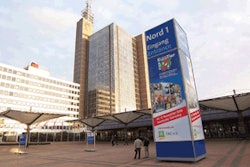Ask the typical consumer about their perception of a family farm and it would probably be along the lines of what we would consider the hobby farm. Combine a few acres with chickens running around the yard with a contented cow plus a large garden, and the average American remembers the good ol’ days (which really were not all that good).
Today many consumer groups have targeted the large poultry companies for promoting factory farming and putting profits in front of bird welfare and the public health. To quote a column from one activist, “Factory farms pollute our air and land, send dollars out of our rural communities, create concerns over food safety, and raise animals inhumanely, and we all know that corporations always put profits before people. Family farms are the only hope for a sustainable agriculture system.”
Family farms are a central component in the American poultry system. With reference to factory farms, the activist’s comments could be nothing further from the truth. When all is said and done, the poultry industry is probably the agricultural sector that is most involved in promoting the concept of the family farm.
What these misguided people do not realize is that the backbone of the broiler industry is the contract grower. The contract system provides financial resources and ready markets for the products produced by family-owned growing operations. It is in the best interest of these family farmers to treat their birds in the best manner possible, as there are financial incentives for top performance and good health of their respective flocks. Healthy birds reduce the risk of foodborne disease. Additionally, the type of land that is used for growing broilers is not usually top-grade arable land. Not only does the system bring dollars into the rural communities, it allows us to use marginal land effectively.
The profile of the typical grower has changed dramatically over the last generation. What was once a secondary source of income for a family has now evolved into a sizable investment and “small business.” The backyard operation of the past, whereby the man of the house had a full-time job and the wife kept tabs on one or two houses, has changed. Grower operations now routinely have five or more houses, thereby necessitating the hiring of non-family personnel. A sizable number of growers now have 10 or more houses.
The 2002 Census of Agriculture—which is already outdated—shows that 19,021 farms have 100,000 or more broilers. The total universe was only 32,006; thus, large operations constituted over 59 percent of the farms. Four years later, I am sure that percentage has grown considerably.
The egg sector is another area whereby family-ownership is the norm. The key is that good management, a willingness to take chances and the ability to show entrepreneurial management have made the survivors larger.
What a lot of the activists are against is “bigness” or in our terms “success.” Technology, genetics and hard work have made the poultry industry the model for the animal protein sector. And the foundation has been the family farm. The idyllic version of animal agriculture is a thing of the past. The family farmer of today’s poultry industry is a risk-taker, a savvy businessperson, an entrepreneur and a guardian of the land and fowl. We need to do a better job in getting this message out to the general public. The term “sustainable agriculture” should not be highjacked by the activists. We need to be active ourselves in showing how our family farmers are being good stewards of the land and our birds.


















